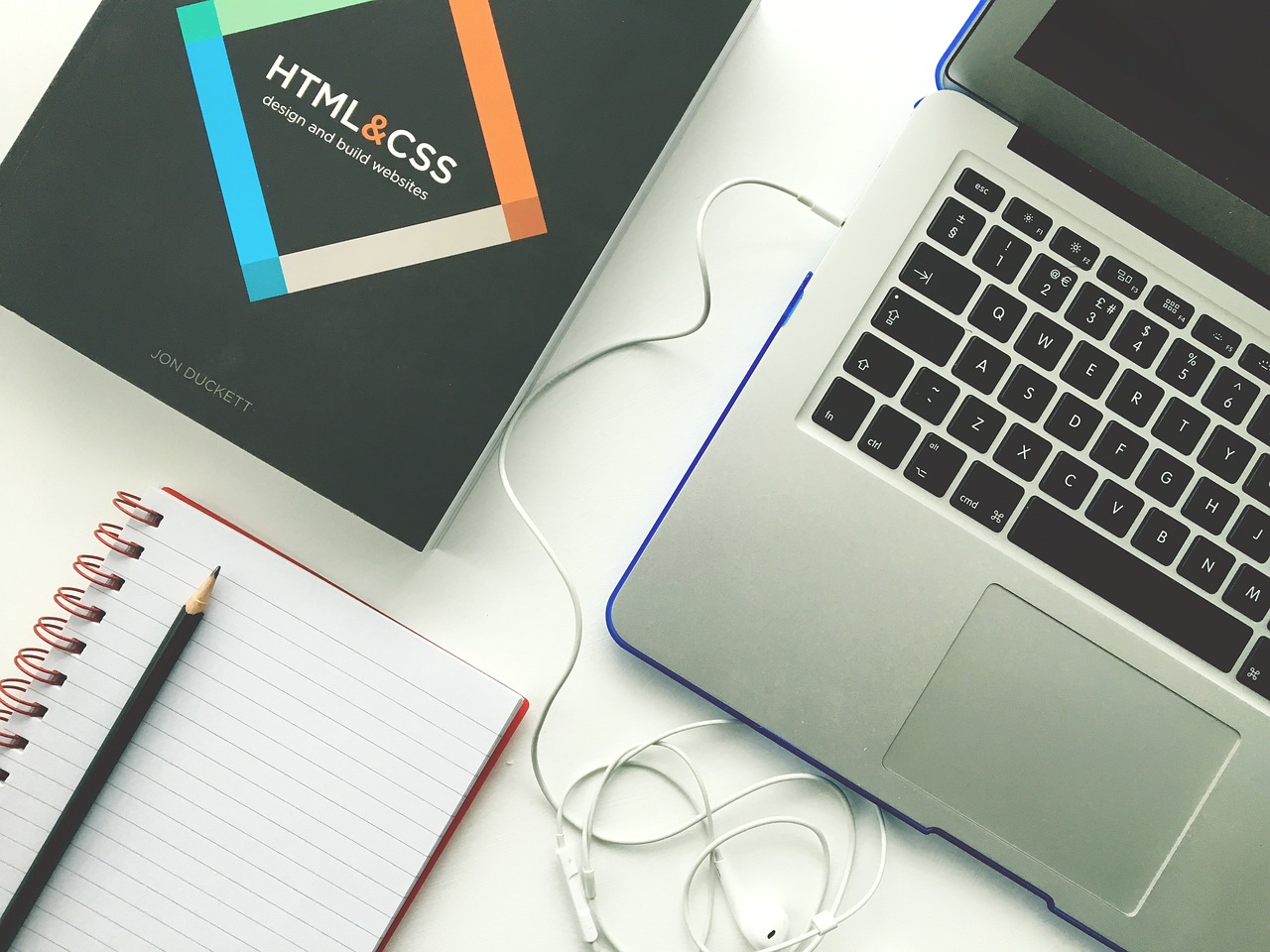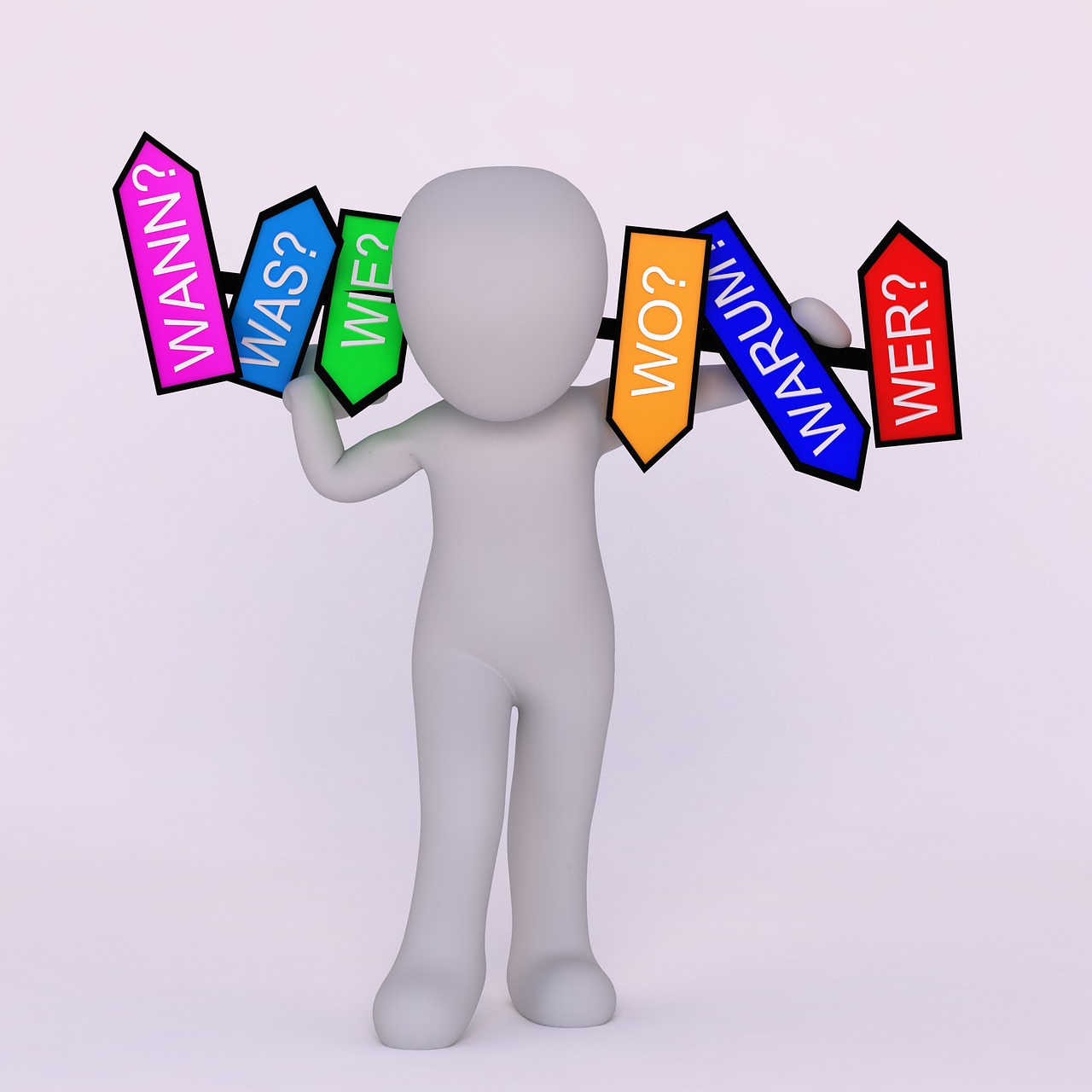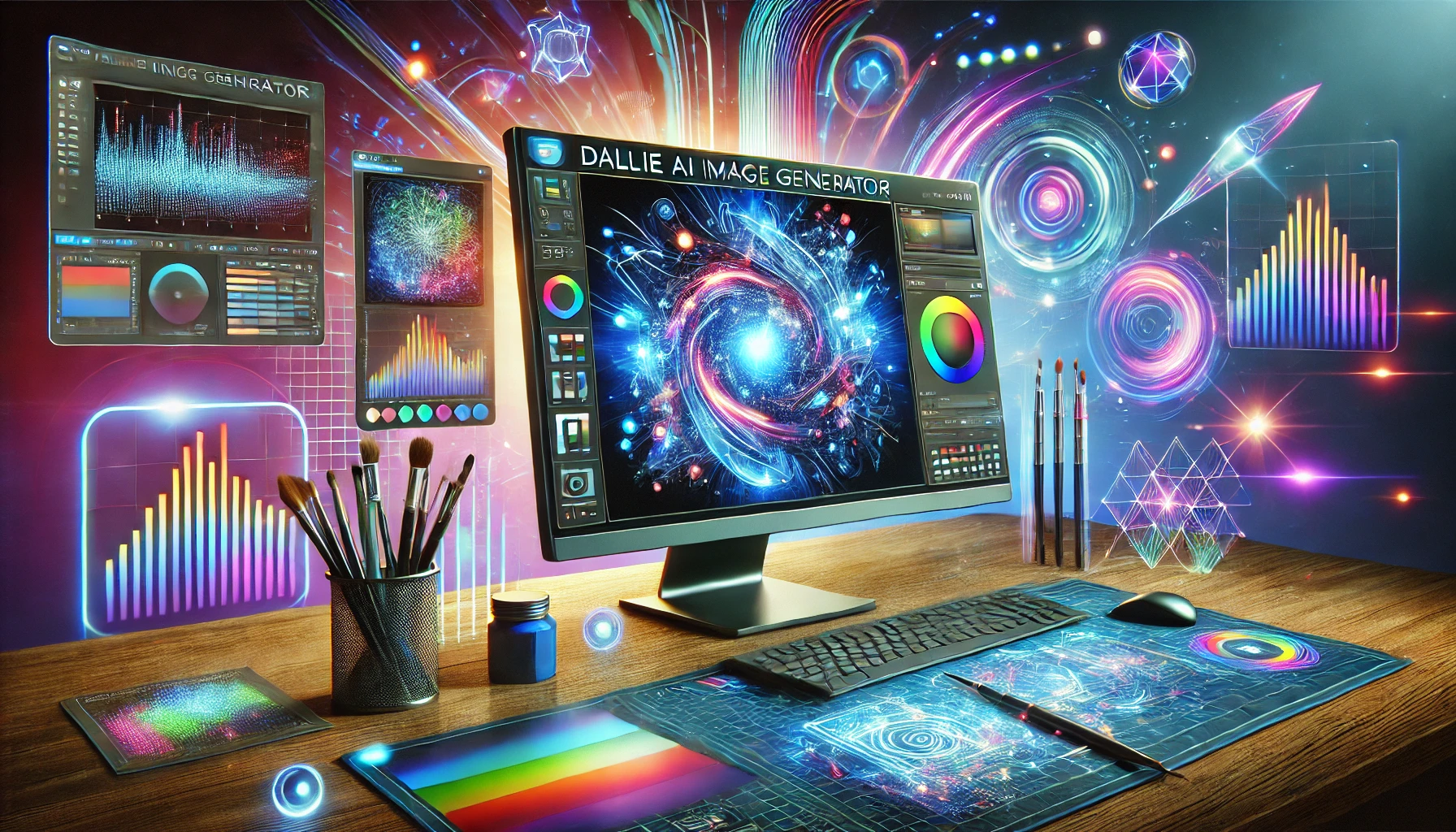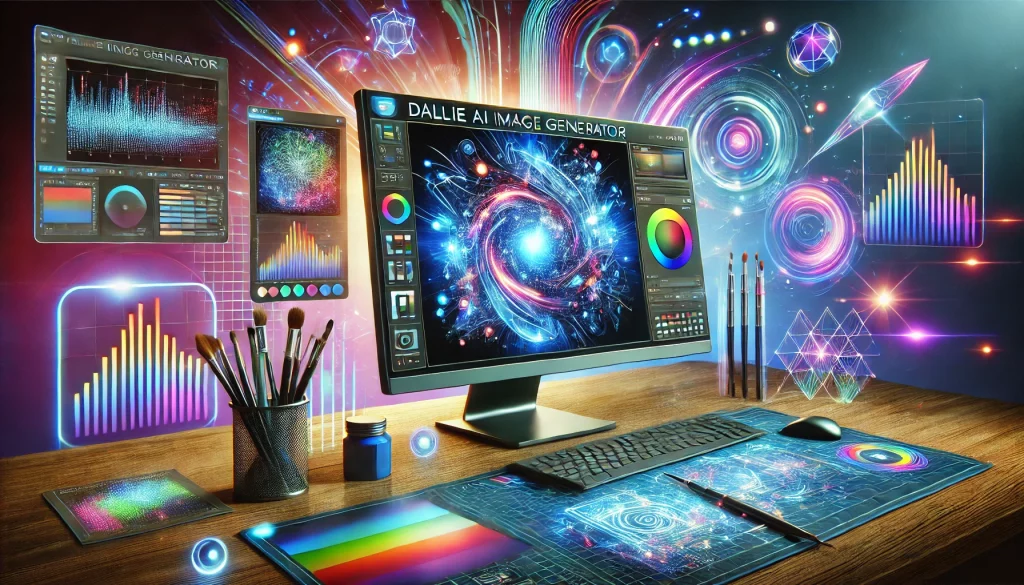In today’s digital landscape, the importance of high-quality visuals for modern websites cannot be overstated. As users become increasingly sophisticated and discerning, the demand for compelling, eye-catching imagery has skyrocketed. This is where artificial intelligence (AI) steps in, revolutionizing the way designers and website owners create visuals.
AI image generators, such as DALL·E, are at the forefront of this creative revolution, offering unprecedented capabilities in visual content creation. These tools are transforming the landscape of web design, allowing for the rapid production of unique, tailored images that can significantly enhance a website’s appeal and functionality.
In this article, we’ll explore the world of AI image generators and how they can be leveraged to create stunning site visuals. We’ll delve into the importance of visuals in web design, introduce you to AI image generation technology, and provide practical guidance on how to use these tools effectively. Whether you’re a seasoned web designer or a business owner looking to spruce up your online presence, this guide will help you harness the power of AI to create visuals that captivate and engage your audience.
1. The Importance of Visuals in Web Design

High-quality visuals are crucial for website engagement, serving as the first point of contact between your brand and potential customers. They play a multifaceted role in shaping user experience and can significantly impact a site’s success. Here are key areas where visuals make a difference:
- First impressions and branding: Within seconds of landing on your site, users form an opinion based largely on visual elements. Compelling imagery can instantly communicate your brand’s identity and values.
- Guiding user navigation: Strategic use of visuals can intuitively guide users through your site, improving overall user experience and reducing bounce rates.
- Enhancing readability and engagement: Well-designed visuals break up text, making content more digestible and increasing the time users spend on your site.
Examples of websites that use compelling visuals effectively include Apple’s product pages, which showcase sleek, high-resolution images of their devices, and Airbnb’s homepage, which uses stunning photography to inspire wanderlust and encourage bookings.
2. Introduction to AI Image Generators
AI image generators are sophisticated tools that use machine learning algorithms to create images based on text descriptions or prompts. These systems have been trained on vast datasets of images and can generate new, unique visuals that match specific criteria.
The main benefits of using AI to create images include:
- Cost-effectiveness: Generating custom images with AI can be significantly cheaper than hiring professional photographers or designers for every visual need.
- Time-saving: AI can produce multiple image options in seconds, a process that would take hours or days using traditional methods.
- Unique visuals: AI can generate one-of-a-kind images based on specific prompts, ensuring your visuals stand out from stock photography.
AI also plays a crucial role in personalizing and customizing site visuals. By generating images tailored to specific themes, color schemes, or brand guidelines, AI helps create a cohesive and unique visual identity for websites.
3. How to Use AI Image Generators for Site Visuals

Getting started with AI image generators is simpler than you might think. Here’s a step-by-step guide on how website owners and designers can begin using these tools:
- Choose an AI image generator: Research and select a tool that fits your needs and budget.
- Familiarize yourself with the interface: Spend time learning how to input prompts and adjust settings.
- Start with simple prompts: Begin by generating basic images to understand the tool’s capabilities.
- Refine your prompts: As you become more comfortable, create more detailed prompts for better results.
- Experiment with styles: Try different artistic styles, color palettes, and compositions.
- Integrate generated images: Incorporate the AI-generated visuals into your website design.
Key points to consider when generating images:
- Selecting the right prompt: Be specific about what you want to see in the image. Include details about style, mood, colors, and composition.
- Customizing to match branding: Use prompts that align with your brand’s color scheme and aesthetic.
- Consistency: Ensure that AI-generated images maintain a consistent style across your website.
AI can create both static visuals and dynamic elements. Static visuals might include hero images, background patterns, or illustrations. Dynamic elements could involve AI-generated animations or interactive graphics that respond to user input.
4. DALL·E AI Image Generator: A Powerful Tool for Web Design

Among the various AI image generators available, the DALL·E 3 AI Image Generator from Jadve stands out as a particularly powerful tool for web design. This advanced system allows users to generate high-quality, unique visuals simply by describing them in natural language.
The DALL·E AI Image Generator excels in producing creative and diverse images that can align perfectly with a brand’s aesthetic. Its ability to understand and interpret complex prompts makes it an invaluable asset for web designers looking to create custom visuals quickly and efficiently.
Some key features of DALL·E include:
- High-resolution output: Images generated are of sufficient quality for professional web use.
- Style versatility: Can create images in various artistic styles, from photorealistic to abstract.
- Contextual understanding: Able to interpret and incorporate subtle nuances in prompts.
DALL·E can help create specific website elements such as:
- Hero images: Generate eye-catching visuals for your landing pages.
- Icons and illustrations: Produce unique graphics for various sections of your site.
- Background patterns: Create subtle, branded backgrounds that don’t overpower content.
By leveraging the DALL·E AI Image Generator, web designers can push the boundaries of creativity while maintaining brand consistency across their websites.
5. Best Practices for Using AI Image Generators
To get the most out of AI image generators, consider the following best practices:
- Craft detailed prompts:
- Be specific about what you want to see in the image.
- Include information about style, mood, colors, and composition.
- Use descriptive adjectives to refine the output.
- Iterate on prompts:
- If the first result isn’t perfect, try adjusting your prompt.
- Experiment with different phrasings to see how they affect the output.
- Keep a record of successful prompts for future use.
- Avoid overuse:
- While AI-generated images are powerful, don’t rely on them exclusively.
- Mix AI-generated visuals with other design elements for a balanced look.
- Use AI as a tool to enhance creativity, not replace it entirely.
- Post-production editing:
- Use image editing software to refine AI-generated visuals if needed.
- Adjust colors, cropping, or add text to better fit your website’s design.
Legal considerations are also crucial when using AI-generated images:
- Copyright: Understand the licensing terms of the AI tool you’re using.
- Attribution: Some AI tools may require attribution for commercial use.
- Uniqueness: Be aware that similar prompts might generate similar images for other users.
Always review the terms of service for your chosen AI image generator and consult with legal professionals if you have concerns about using AI-generated images commercially.
6. Advantages and Limitations of AI Image Generators
AI image generators offer several advantages for web design:
- Speed and efficiency: Generate multiple image options in seconds.
- Flexibility: Create visuals for any theme or style without limitations.
- Cost-effective: Reduce the need for expensive stock photo subscriptions or custom photography.
- Customization: Easily tailor images to specific brand guidelines or website themes.
However, there are also some limitations to consider:
- Quality concerns: Some complex or highly detailed visuals may not render perfectly.
- Dependency on prompts: The quality of output heavily relies on the accuracy and detail of input prompts.
- Lack of human touch: AI-generated images may sometimes miss subtle emotional nuances that human artists can capture.
- Potential for repetition: Without careful prompting, there’s a risk of generating similar images repeatedly.
To mitigate these limitations:
- Combine AI-generated images with human-created elements for a balanced approach.
- Use AI as a starting point, then refine and customize images with traditional editing tools.
- Continuously improve your prompting skills to get more accurate and diverse results.
7. Integrating AI-Generated Images into Your Website
Here’s a comparison table of popular AI image generation tools:
| Tool | Features | Pricing | Ease of Use |
|---|---|---|---|
| DALL·E | High-resolution output, style versatility, text-to-image | Pay-per-use model | User-friendly interface |
| Midjourney | Artistic style focus, community features | Subscription-based | Requires Discord, moderate learning curve |
| Stable Diffusion | Open-source, highly customizable | Free (self-hosted) or paid services available | Technical knowledge required for self-hosting |
| Canva’s Text to Image | Integrated with Canva’s design tools | Included in Canva Pro subscription | Very easy, integrated with familiar interface |
To seamlessly integrate AI-generated visuals into your website:
- Ensure visual consistency:
- Use AI to generate images that match your existing color palette and style guide.
- Create a set of standard prompts that align with your brand’s visual identity.
- Optimize for performance:
- Compress AI-generated images without significant quality loss.
- Use modern image formats like WebP for faster loading times.
- Implement lazy loading for images to improve overall site performance.
- Responsive design:
- Generate multiple versions of images for different screen sizes.
- Use AI to create variations of the same image optimized for mobile, tablet, and desktop views.
- A/B testing:
- Use AI to generate multiple versions of key visuals and test them with your audience.
- Analyze user engagement to determine which AI-generated images perform best.
Here’s a comparison table of AI-generated visuals versus traditional design methods:
| Aspect | AI-Generated Visuals | Traditional Design Methods |
|---|---|---|
| Cost | Generally lower, pay-per-use or subscription | Higher, involves designer fees or stock photo purchases |
| Time | Rapid generation, often within seconds | Can take hours to days for custom designs |
| Flexibility | Highly flexible, can generate multiple options quickly | Limited by designer availability and revisions |
| Uniqueness | Can create unique images, but may lack fine-tuned customization | Fully customizable, but may rely on common stock images |
| Consistency | Maintains consistency with proper prompting | Depends on designer’s skill and brand guidelines adherence |
8. Future of AI in Visual Content Creation
As AI technology continues to evolve, we can expect even more exciting developments in visual content creation:
- Enhanced realism: Future AI models will likely produce even more photorealistic images, blurring the line between AI-generated and traditional photography.
- Video generation: AI is already making strides in video creation, and we can anticipate more sophisticated tools for generating dynamic video content for websites.
- Interactive visuals: AI could power real-time generation of interactive graphics that respond to user behavior or data inputs.
- Personalization at scale: AI might create unique visuals for each website visitor based on their preferences and browsing history.
- 3D and VR content: As virtual and augmented reality become more prevalent, AI could assist in generating complex 3D environments and objects.
To stay ahead of the curve:
- Regularly explore new AI tools and features as they become available.
- Experiment with emerging technologies like AI-assisted video creation.
- Stay informed about ethical and legal developments surrounding AI-generated content.
- Consider how AI can enhance rather than replace human creativity in your design process.
Conclusion
AI image generators are revolutionizing the way we create visuals for websites. These powerful tools offer unprecedented speed, flexibility, and cost-effectiveness in producing high-quality images that can significantly enhance web design and user engagement.
From crafting attention-grabbing hero images to designing unique illustrations and icons, AI image generators like the DALL·E AI Image Generator are empowering designers and website owners to push the boundaries of visual creativity. By understanding the capabilities and limitations of these tools, and following best practices for their use, you can harness the power of AI to create stunning, original visuals that set your website apart.
As we look to the future, the potential for AI in visual content creation is boundless. By embracing these technologies now and staying informed about new developments, you can ensure that your website remains at the cutting edge of visual design.
We encourage you to explore AI image generators and see how they can transform your approach to website visuals. Start small, experiment with different prompts and styles, and don’t be afraid to combine AI-generated elements with traditional design techniques. With practice and creativity, you’ll be well-equipped to create a visually compelling online presence that captures attention and drives engagement in the digital age.

